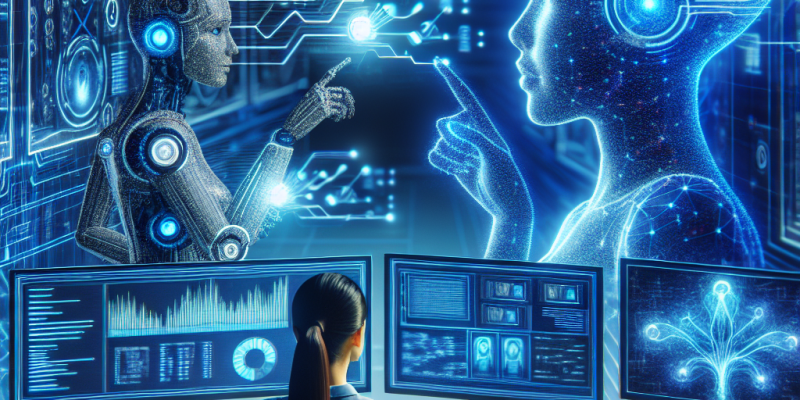The Human-AI Partnership: Collaborating with Technology to Boost Productivity

In an era defined by rapid technological advancement, the collaboration between humans and artificial intelligence (AI) is reshaping the landscape of productivity across various sectors. Far from the dystopian narratives often depicted in popular media, the relationship between human workers and AI technologies is more akin to a partnership that enhances capabilities, streamlines processes, and fosters innovation. This article explores the dynamics of the human-AI partnership, shedding light on how this collaboration can significantly boost productivity.
Understanding the Human-AI Synergy
AI systems are designed to process vast amounts of data, identify patterns, and make decisions at speeds unfathomable to most humans. By leveraging this computational prowess, businesses can offload routine and repetitive tasks to machines, freeing human workers to focus on strategic, creative, and interpersonal activities—areas where human insight and emotional intelligence shine.
For instance, AI-powered tools like chatbots can handle customer inquiries around the clock, resolving simple requests and allowing human agents to tackle more complex issues that require human intuition and empathy. This dynamic not only improves customer satisfaction but also increases overall efficiency within organizations.
Enhanced Decision Making
One of the most compelling advantages of integrating AI into the workplace is its capacity to aid in decision-making. By harnessing data analytics and predictive modeling, AI can provide valuable insights that inform business strategies. For example, sales teams can use AI algorithms to analyze market trends and consumer behavior, leading to more accurate forecasting and targeted marketing efforts.
Moreover, AI can augment human judgment by presenting relevant information and potential scenarios, effectively acting as a "digital assistant." This support is particularly beneficial in high-stakes environments like healthcare or finance, where the implications of decisions can be significant. By combining human expertise with AI-driven analysis, organizations can achieve more informed, effective outcomes.
Streamlining Processes and Reducing Burnout
Employee burnout has emerged as a critical issue in the modern workforce, with excessive workloads often leading to decreased productivity and well-being. The human-AI partnership can alleviate these pressures by automating mundane tasks and enhancing workflow efficiencies.
Robotic Process Automation (RPA), for instance, can take over repetitive back-office tasks such as data entry, payroll, and compliance checks, allowing employees to focus on more engaging, intellectually stimulating work. This not only enhances job satisfaction but also leads to higher levels of productivity and creativity.
Additionally, AI tools can help identify bottlenecks in processes, optimizing workflows by recommending improvements and reallocating resources efficiently. This real-time analysis helps teams work smarter, not harder.
Fostering Innovation and Creativity
AI’s capabilities extend beyond logistical advantages; they also present opportunities for innovation. By handling data-driven tasks, AI enables human workers to spend more time brainstorming, developing new ideas, and experimenting with creative solutions.
In industries like advertising and design, AI tools can generate variations of concepts or provide creative inspiration, enhancing the creative process. For example, AI-driven platforms can analyze previous campaigns to suggest optimal design elements, thus shortening the feedback loop and accelerating project timelines.
Moreover, collaborative AI applications can serve as a springboard for innovation, encouraging teams to think outside the box and embrace experimentation. This collaborative spirit is essential in today’s competitive market, where adaptability and creativity are paramount.
The Path Forward
Despite the myriad benefits of the human-AI partnership, it is vital for organizations to approach the integration of AI with a thoughtful strategy. Employees must be trained to work alongside AI tools effectively, cultivating a culture of continuous learning and adaptation. Transparency regarding AI capabilities and limitations is also crucial to build trust among employees.
Moreover, ethical considerations must guide the development and deployment of AI systems. Ensuring that AI operates within ethical boundaries and does not contribute to biases is essential for fostering a responsible partnership.
Conclusion
The human-AI partnership is not merely a trend; it represents a transformative approach to the way we work. By collaborating with technology, businesses can unlock new levels of productivity, creativity, and innovation. As organizations navigate this evolving landscape, embracing the strengths of both humans and AI will pave the way for more efficient, dynamic, and fulfilling work environments. In this synergistic relationship, the future of work is not about machines replacing humans; it’s about creating a harmonious ecosystem where both can thrive.














